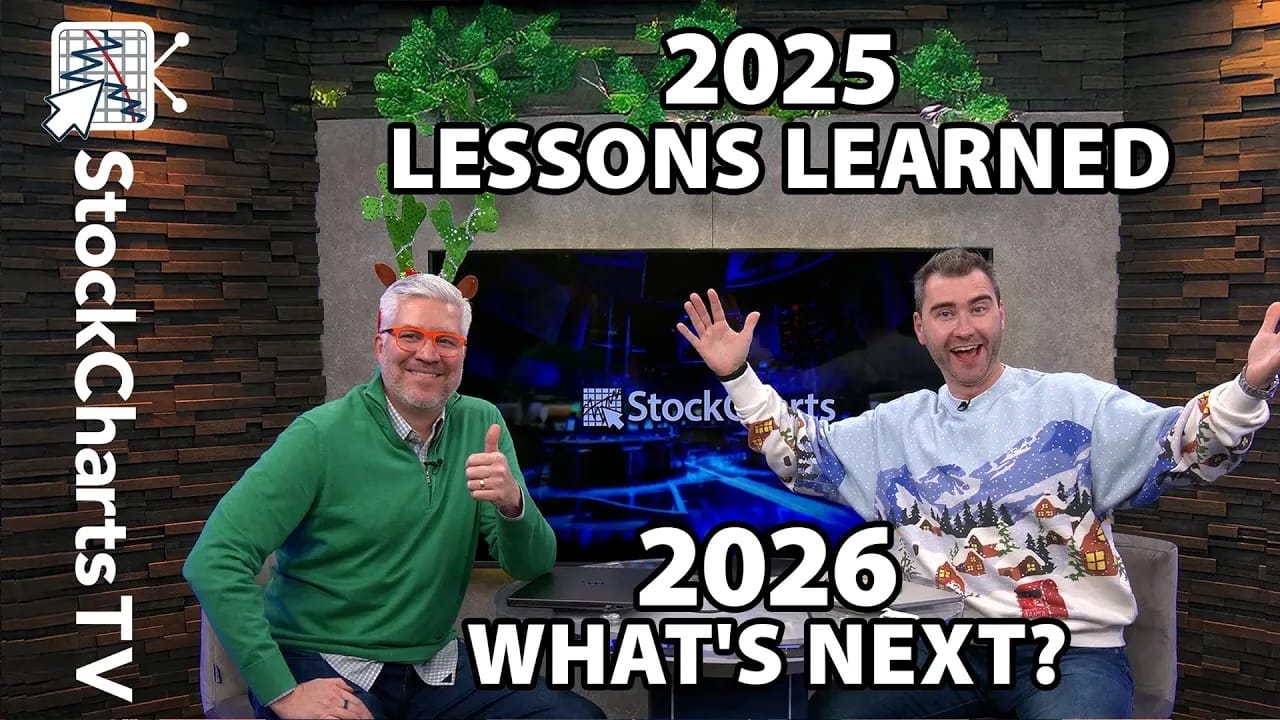HAMMERS, HANGING MEN, SHOOTING STARS AND INVERTED HAMMERS -- SPY FORMS BEARISH CANDLESTICK PAIR -- NASDAQ BATTLES RESISTANCE IN THE 3000 AREA -- BANKING STOCKS CONTINUE TO LEAD MARKET HIGHER -- OIL BOUNCES OFF RANGE SUPPORT
HAMMERS, HANGING MEN, SHOOTING STARS AND INVERTED HAMMERS... Link for todays video. The S&P 500 ETF (SPY) got a big bounce in the second half of November and then stalled with opposing candlesticks the first two weeks of December. Before looking at the SPY chart, lets review a few candlestick patterns. There are three parts to a candlestick: the body, the high and the low. The open-close range forms the body, while the period high forms the upper shadow and the period low forms the lower shadow. As chart 1 shows, hammers and hanging man candlesticks have small bodies near the period high and long lower shadows. Even though these two candlesticks look the same, they form in different trends and have different meanings. A hammer forms in a downtrend as a bullish reversal pattern. A hanging man forms in an uptrend as a bearish reversal pattern. Both require confirmation with further upside.

(click to view a live version of this chart)
Chart 1
As chart 2 shows, shooting stars and inverted hammers have small bodies near the period low and long upper shadows. They look the same, but form in different trends. A shooting star forms in an uptrend as a bearish reversal pattern, while an inverted hammer forms in a downtrend as a bullish reversal pattern. Both require confirmation with further downside.

(click to view a live version of this chart)
Chart 2
SPY FORMS BEARISH CANDLESTICK PAIR ... The prospects of a reversal can be enhanced when two bullish or bearish candlesticks form consecutively. Chart 3 shows the S&P 500 ETF (SPY) forming an inverted hammer and a hammer in late September. There may be some debate on this hammer, but Steve Nison notes that we need to have a little flexibility in our assessment. Does the September 2011 reversal week capture the essence of a hammer? Yes, there was an open near 110, a dip to 105 and a close near 113. These two candlesticks were confirmed with a gap and surge the very next week. Flash forward to the current situation and we see a hanging man followed by a shooting star. This pairing is the opposite of what we saw in September 2011. These two bearish candlesticks are smaller, and perhaps less significant, than the bullish pair. Also note that these are as yet unconfirmed and the four-to-five week trend is still up. A close below 140 is needed to confirm these two as actually bearish and argue for a reversal of the uptrend.

(click to view a live version of this chart)
Chart 3
The indicator window shows the MACD-Histogram (5,35,5), which measures the difference between MACD (5,35,5) and its signal line. I am using MACD(5,35,5) instead of standard MACD(12,26,9) because this is a weekly chart and I want more sensitivity from the indicator. The green dotted lines show when the MACD-Histogram broke above +1 and the red dotted lines show when it moved below -1. There are too many whipsaws using simple zero line crosses so I added a buffer to the signals. A bearish momentum signal triggered in mid October and remains in affect as SPY stalls in the 142.5 area. A move above +1 is needed to turn the MACD-Histogram bullish again. Chart 4 shows the Russell 2000 ETF (IWM) breaking above the 2-3 month trend line and then stalling in the 82-83 area.

(click to view a live version of this chart)
Chart 4
NASDAQ BATTLES RESISTANCE IN THE 3000 AREA... The Nasdaq could hold the key to the next market move. Chart 5 shows the Nasdaq bouncing in November and then stalling around 3000 the last two weeks. Notice that the index hit resistance in the 3000-3050 area in late October as well. A break above 3050 would be bullish. As long as the Nasdaq stalls and fails to break resistance, watch support at 2950 for a signal that prices are breaking down. The indicator window shows the Percent Price Oscillator (5,35,5) hovering around the zero line and just below its signal line. An upturn and move above the signal line would be positive for momentum. Chart 6 shows the Nasdaq 100 ETF (QQQ) hitting resistance just above 66 the last three weeks.

(click to view a live version of this chart)
Chart 5

(click to view a live version of this chart)
Chart 6
BANKING STOCKS CONTINUE TO LEAD MARKET HIGHER... Even though the Nasdaq and the technology sector have been lagging the market recently, the finance sector has been picking up the slack with relative strength. Chart 7 shows the Finance SPDR (XLF) surging over 1% in early trading on Monday. The ETF is now poised to challenge its September-October highs. The indicator window shows the price relative breaking above its November high, which means XLF is leading the market. Relative strength in this key sector is a positive for the market overall.

(click to view a live version of this chart)
Chart 7

(click to view a live version of this chart)
Chart 8
Chart 8 shows the Regional Bank SPDR (KRE) forming a triangle and breaking above triangle resistance last week. The ETF fell back on Thursday-Friday, but recovered this loss with a big move early Monday. Notice that KRE is now challenging the September trend line. The indicator window shows the price relative wallowing near its lows the last six weeks. An upturn and breakout would signal a return to relative strength for regional banks.
OIL BOUNCES OFF RANGE SUPPORT ... Even though stocks have been strong and the Dollar weak since mid November, oil has not been able to rally and is still trading close to its November lows. Chart 9 shows the US Oil Fund (USO) in a downtrend since mid September and trading range since late October. USO has considerable support in the 31-31.50 area and bounced off this level the last four days. A full trend reversal would not occur unless USO breaks above range resistance around 33. The indicator window shows RSI moving into its resistance zone (50-60). A breakout at 60 would be bullish for momentum.

(click to view a live version of this chart)
Chart 9

(click to view a live version of this chart)
Chart 10
Chart 10 shows the Energy SPDR (XLE) working its way higher since mid November. The advance has been subdued because of weakness in Spot Light Crude ($WTIC). The channel trend line and early December low mark support in the 70-71 area. A break below 70 would be bearish for XLE. The indicator window shows the Correlation Coefficient (XLE,$WTIC). Notice how the correlation was positive until the past week when the indicator plunged into negative territory. A negative correlation between oil and XLE is unusual and something needs to give. Either XLE moves lower along with oil or oil moves higher to catch up with XLE.











